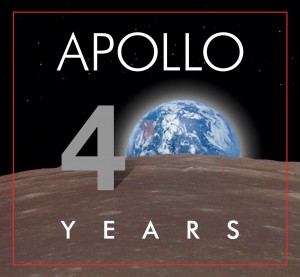This is the version of an article for our parish newsletter on faith and science. The longer version is posted here. It is my hope that this version is accessible to a general audience (the longer version I’ve been told is not so easy to read, but I still think with some effort can be read by any interested reader).
Science and religion
Because the terms science and religion are enormously broad topics they need to be restricted. Science will refer to physics. Religion will mean Christian interaction with that science.
Natural science (physics) has gone through three major stages. These stages will be discussed in turn and the relationship with religion examined below.
Stage 1: Geometry
From the time of the Greek golden age through the 16th century the understanding of nature was based on pure geometry. Study of Euclid was crucial because geometry was seen as the key principle for understanding nature. Aristotelian cosmology and the Pythagorean movement are examples of this view of nature.
In the second through fifth centuries orthodox Christian theology arrived at a basic understanding of the relationships between God, man, and the world which remain dominant with minor variations to this day. Origen and St. Gregory of Nyssa both often explicitly tied theology with philosophy (and natural philosophy or physics). One important 2nd century philosopher and contemporary of Origen was Plotinus. That Origen and Plotinus each attended the others talks and interacted frequently is exemplary of the relationship between science and religion at that time.
Stage 2: An Analytic View
Between the time of Galileo and Newton the conception of nature shifted. The understanding of natural laws changed to a description of motions and interactions of objects given by formula, e.g., Newton’s three laws of motion. Descartes laid essential foundations of algebra to describe and prove geometrical concepts. Ways of thinking moved from the constructive geometric view to an analytic one. Later mathematical developments made the analytical approach immensely successful.
In this time period Christian theology (in the West) also underwent a revolution. The theological turmoil of Reformation and counter-Reformation occurred. This changed what Christianity meant for the West. Too, the relationship between natural philosophy and theological thought changed. Science and religion parted ways. The Origen/Plotinus relationship disappeared. While a few priests (e.g., Mendeleev and Priestly) contributed to science, religion’s interactions with science became rare. Some theology would come into direct conflict with modern scientific views, e.g., evolution vs literal creation accounts.
Stage 3: Symmetry.
In the early 20th century mathematical developments began another shift in our understanding of how the universe is constructed. The mathematical inventive work of Emmy Noether, Hamilton, and Riemann made this shift possible. Einstein, Kaluza, and Klein first used this new math, specifically a geometrical property known as symmetry, to provide the conceptual framework of physics. In 1954, Yang and Mills defined the Standard Model based on these ideas. The Standard Model is the current best model of the particles and forces found in nature. Geometry (as symmetry) has returned and again today drives our understanding of nature.
The separation between science and religion which developed since the 20th century has not been resolved. With a few exceptions, like Father John Polkinghorne, who was an important theoretical physicist and is presently an Anglican theologian, little theological thought is being put into trying to reunite and reconcile science and religion.
Natural science over the past 3000 years has gone the distance, from a geometrically motivated view of the universe it traversed through an analytic approach and subsequently returned to a geometrically motivated view. In the first period there was no tension between theology and science. During the second, a separation occurred which continues today.
The complexity and scope of what physics does understand regarding the large and small scale structure of space-time and the natural world is far greater than in the 3rd century. Yet, a theology asserting where God stands in relationship to man and His universe should be developed which is in accord with modern physics. This should be an active and viable task for theology today.

